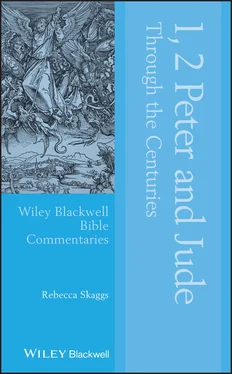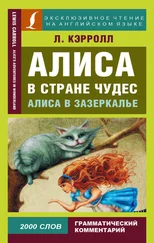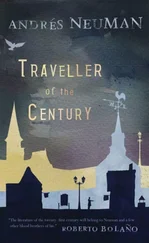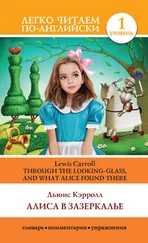Nineteenth‐ and Twentieth‐Century Perspectives
On 1 Peter
The pivotal dialog between Selwyn and Beare in the late nineteenth to early twentieth century led to the comment by New Testament scholar Stephen Neill that 1 Peter was “the Storm‐center of New Testament studies” (Elliott, 1976: 343).
Beare advocates that 1 Peter is “a Pseudonymous product of the Pauline Circle,” which is “inferior to the brilliance and … spirit of the genuine Pauline epistles” (Beare, 1970 [1947], cited in Elliott, 1990: xvii). In contrast, Selwyn argues vehemently that it is an encyclical letter to Christians in the five provinces of Asia Minor: “a microcosm of Christian faith, duty and the model of a pastoral charge” (Selwyn, 1958: 1).
This “storm” died out fairly quickly. However, it led to Elliott’s now famous statement that 1 Peter is “an exegetical Step‐child” which needs “rehabilitation” (Elliott, 1976: 243). His article of this title elaborates on this, commenting further on the state of 1 Peter as caught in “a disconcerting pattern of benign neglect” (ibid.: 343–354).
Elliott engaged in another dialog on 1 Peter in the 1980s – with Balch on the role and function of the household codes and the implications for understanding the letter’s general strategy. Balch stresses the use of the codes by 1 Peter (Balch, 1981a: 81–116), while Elliott argues that 1 Peter was written by a Petrine group in Rome in Peter’s name after his death by Nero. Elliott at this time understands the purpose of the epistle to be the solidarity of believers in Rome with the suffering believers in Asia Minor and through the world. He holds that the central message is that God alone is father and judge and is the only one to whom allegiance and reverence is due (1 Pet. 2:17) (Elliott, 1981: 208–220).
Meanwhile, separately in three different geographical locations, Elliott, Brox, and Goppelt were working on a new perspective – a methodology from the social sciences. Up to this point, much social‐scientific work had been done on the Pauline epistles but little if anything on the Catholic epistles, 1 Peter among them, leading to Elliott’s reference to the “benign neglect” of the small text (Elliott, 1990: xviii). Elliott states their position on 1 Peter as “an original and powerful statement on the social role of the Christian minority movement in a hostile non‐Christian society” (Elliott, 1990: xviii). All three of these scholars agreed that rather than a “distant echo of Pauline theologomena and an inferior product of a Pauline school”, in fact, 1 Peter is “an independent and creative piece of encouragement to a sectarian Christian movement threatened by local social pressure to go along in order to get along” (ibid.). Further, they show that 1 Peter is the most systematic and comprehensive treatment of the issue of Christian alien residence and responsibility within the structures of non‐Christianity (Goppelt, 1993 [1978]: 41; Elliott, 1990: xviii; see also Brox, 1993).
After this time, scholars have continued to explore still other dimensions of social‐scientific methodology such as rhetoric (Martin, 2007); postcolonialism (Horrell, 2007); and narrative (Boring, 2007). All of these plus a few others can be found in Reading First Peter with New Eyes (Webb and Bauman‐Martin, 2007). Although 1 Peter is no longer neglected, there is still little agreement on the origin, context, and purpose. This, however, adds to its richness for understanding, leaving us with an amazing task to undertake. So, in light of all of these new developments, this present study will explore the reception history especially in ancient times to the present, leaving you, our reader, to explore current trends and readings on your own. Perhaps even new additional perspectives are waiting to be discovered.
Scholarship on Jude and 2 Peter mirrors that of general biblical studies: from the mid‐nineteenth century through the twentieth century, the dominant method was the historical‐critical approach. The last quarter of the twentieth century, however, sparked new perspectives in which scholars began to develop methodologies which build upon and go beyond this to cross disciplines. An impressive example of this is rhetorical criticism presented by Watson (1988). Jerome Neyrey is one of the first to apply social‐scientific method in his commentary on Jude and 2 Peter (1993). These new approaches continued to combine in unusual ways, perhaps culminating in the socio‐rhetorical interpretation developed by Robbins (1996). Further, linguistic and literary methods have also added their insights, illuminating the nature of the reading and writing process itself. In the twenty‐first century, these advances led further to a refocus on these little neglected texts by the development of a special consultation by a group of scholars at the SBL Annual Meeting in 2007. The results of these meetings have been published in several volumes, the Reading with New Eyes series. The volume on Jude (2008) is edited by Webb and Davids and includes notable essays on new methodologies such as sociological models (e.g. Lockett, “Purity and Polemic”); Jeremy Hultin applies a sociological model which considers language utterance as act; see also Betsy Baumann‐Martin, “Postcolonial Pollution.” One of the most intriguing models is the socio‐rhetorical category (rhetography) developed by Webb, building upon Robbins’ socio‐rhetorical criticism. All of these show the richness in these small texts which continues to enhance new approaches. This present volume (2008) includes references to such studies when appropriate, but to go into more depth is beyond the purpose and scope of the series.
The volume on 2 Peter (2010) includes equally enlightening essays on new approaches to 2 Peter. These highlight perspectives such as socio‐rhetorical interpretation (D. Watson); rhetography and rhetology (T. Callan, D. Sylva); and the sociological category of “Collective Identity” (J. Miller).
Although reception history indicates that all three of our epistles have had significant effects through the centuries (see Appendix 3for timeline), it is important to consider their use in liturgy and worship. Their use in church creeds, constitutions, and confessions is included in the commentary itself but it is appropriate to address here their use in the Lectionary of church worship. The Revised Common Lectionary shows a clear picture.
The Revised Common Lectionary , developed in 1992, having been derived from the 1983 version, is based on the Ordo Lectionem Missae (1969). This is a post‐Vatican II revision of the Roman Lectionary (Vanderbilt Divinity School Library website). It is used by many churches all over the world (see website for list). In terms of our three epistles, the picture is disappointing: 1 Peter is used eight times: once on Holy Saturday, once in Lent of Year B, and six times during the Easter season of year A; 2 Peter appears only twice and Jude is absent altogether. The Roman Catholic Lectionary is very similar, except for a few cases in regard to feast days specific to the Roman Catholic Church. Nonetheless, the use of our three epistles is similar: seven readings from 1 Peter; 1 from 2 Peter, and none from Jude (Vanderbilt Div. School Library online).
Overview and Themes of Each Epistle
Peter
Although all three of these epistles are some of the smallest in the whole Bible, they are filled with richness and vitality. In fact, 1 Peter addresses at least briefly all of the major doctrines of Christianity. Of course, these “kernels” would be elaborated, debated, and developed as the Church moved through the centuries, but this text indicates that these ideas existed at a very early time. However, the main theme of 1 Peter is the transformed life which for Peter almost always (necessarily?) includes the element of suffering. Peter also weaves throughout admonitions on the behavior of the transformed life and how to embrace this joyfully by God’s grace and hope.
Читать дальше












